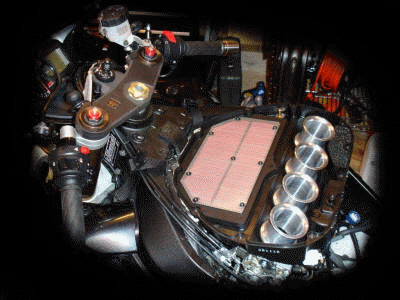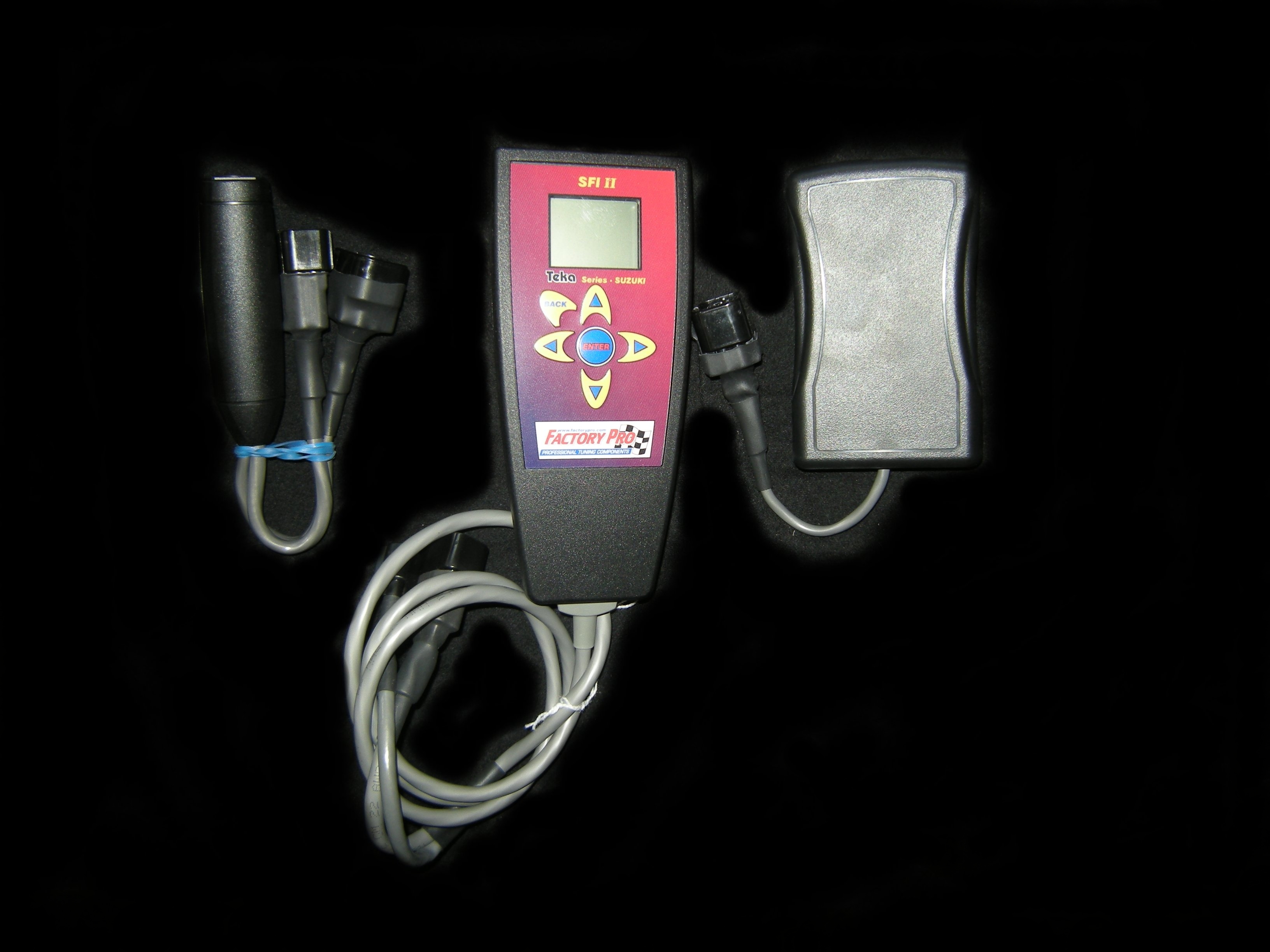|
First drafty draft

Ever been shot at with an "air gun" (without ammo!)?
That teeny bit of air, moving really fast - does have energy and the
"mass" of the air has "inertia" and can demonstrate power, for
instance, by stunning pesky unsuspecting flies, for instance.
Basically - that demonstrates that air, moving fast, can pile up
against something and build up high pressure. and knock flies out,
for instance.
In an engine, we have a much larger amount of air,
in a "tube" (intake tract) moving a bit slower, like 220 -275 feet
per second - (for scale, I believe that 250 feet per second is just
a tad over 170 mph) but it definitely wants to keep moving in
the direction that it was going! And there's a lot more air moving
through than my 1000 feet per second (681 mph at the muzzle?) pellet
gun.
So - there's a fair amount of air mass in an engine at 170 mph
to work with.
Sorry to muddle the waters, but that 220 -275 air
speed is not really correct, as I think about it - That's what
"somebody proclaimed" and is rarely questioned and is really 220-274
fps at "some" flowbench pressure (12"?). Most people generally
forget to qualify velocity number with pressure numbers when
bantering.
In actuality, the real flow rate in an engine's intake port, at any
point in time, varies from slightly backwards, to not moving much at
all to REALLY fast during
the intake stroke.
But the point is - it's like going, you know, a "million miles an
hour" when it's going into the engine, through the intake tract.
So - Engine's running -
Have to start somewhere, so... we jump in here......
Air's going into the combustion chamber, though the intake tract
assembly (port, throttle body / carb and "velocity stack").
All that air in the intake port and stack is running real fast,
like a "million miles an hour", towards the combustion chamber when
the valve was open.
The piston was helping by going down, sucking, so to speak.
It gets to BDC and starts coming back up. It stops "sucking" at BDC.
Air's still a runnin' in. Because of that million mile an hour
column of air in the intake tract......
At some degree of crank rotation (degrees) the air molecules in the
front are stopped against the piston but the ones in the back kept
running in and crashed all into the guys in the front. Pretty soon,
there's the a big 'ole compressed pile of air molecules in the port and the
combustion chamber and intake tract. What a high pressure mess.
At low rpm, the guys in the back of the pile have enough time to
shake their heads and say "Woah! What the heck as that?" "I dunno,
but, lets get the heck back outta this high pressure port and go back into the
lower pressure airbox - there's too many of us in here. Can't stand the pressure!"
So - out they start going..... back out the port and throttle body /
carb and the velocity stack and the pressure in the intake tract is
lessened as the guys in the back get the heck back out and the guys
in front turn around and follow the bum's rush back out to the
airbox. The intake valve is still open.
Then the intake valve closes - trapping whatever air and fuel is
still in the combustion chamber.
If it's a bit below the rpm that the intake tract is tuned for
(length and diameter), you'll end up with a bit more trapped air
(dynamic compression) than what it would be if the air was just
getting sucked into the engine with no "complimentary" intake tract
length and diameter, but not as many air molecules as you could have
trapped.....
That's if it was just below the "tuned range" of the intake
tract.
If it's a lot of rpm below the "tuned length" of the intake tract, you
would see fuel actually get pumped back out of the velocity stack.
A tuner would call that "reversion" and power would probably not be
very good at those rpms.
Under what we call reversion conditions, trapped compression would probably be
a ratio that is related to "even less than atmospheric"
- as the air rushing back out drags the first air molecules back out
with it.
You'd have to lean that out a bunch, as the air that got punted back
out the stack was already fueled up - but it goes out, then
eventually back though the intake tract and get "fueled" again....
yuck.
"Reversion" basically, "sucks". (small joke!)
MAJOR POINT!
Whatever air is still in the combustion chamber when the intake
valve is closed is what gets burned and makes pressure to push down
on the piston. More air molecules is better (and if you have the
same combustion chamber volume and more air molecules there, then
you have more pressure, aka "dynamic compression").
The trapped air pressure (dynamic compression) changes based on rpm.
Actually, it changes based on anything that changes flow rates,
velocity, intake tract length or..... the intake valve's closing
timing.....
Air goes in as long as it can before the pressure inside the
combustion chamber, with the intake valve open, is greater than the
pressure in the intake tract. Then it wants to turn around and go
back out......
So - now we know what's inside the combustion chamber and the engine
will use the trapped air to make power on this next power stroke.
That's what happens at low rpm, below where the intake tract wants
to work......
How about at higher rpm, or "the rpm that the intake tract
was tuned" for? (stack length, inner diameter, airbox volume)
Piston's going down on the intake stroke, with the intake valve
open. The column of air, running a million miles an hour, follows
the piston and after BDC, keeps trying to cram itself in, but
eventually it reaches high enough pressure in the combustion
chamber, that even though the backdoor guys are still trying to ram
themselves in, they can't. Before they turn around, you slam the
intake valve closed. Ahah! TRAPPED air!
So - if you are at the right rpm range, and the intake tract is just
the right length and diameter for that rpm, and the intake valve
closing event is timed EXACTLY at the right time - (right before the
air starts back out) - you'll catch a bunch more air molecules at
higher than outside air pressure in the combustion chamber -
Magic! Power!
If you time everything just right, you pick up free power due to the
higher "dynamic compression".
Depending on the original intake tract, changing velocity stacks can
be good for as much as 2% to 5% power across about a 3000 to 3500
ish rpm range without hurting power anywhere on 2000ish vintage
engines.
That part of the story on intake tracts.
There's the other 2/3rds.
The 2nd part:
That pressure wave -
Add that the air "pressure wave" column of air that gets bounced out
into the airbox when that intake valve is closed and then makes a
low pressure in the port (when the intake valve is still closed -
then, there is lower pressure in the port and higher in the airbox.
Dang! Wouldn't it be cool if we could do something with that?
The molecular dude-airs say "Whoa!! It's high pressure out here
in the airbox and low back in the port! This way guys! Back into the
port! Charge!!!"
So they all start zooming back into the intake tract "tube" and they
keep runnin' in, in a column of air, through that intake tract
"tube" until they start that crashing up against the closed intake
valve again. "Whoa baby! It's high pressure in here and we......"
Whammo! The intake valve opens up!!!! and ZOOM! You have "higher
than standard air pressure" in the port when the intake valve opens.
Neat trick!!
And the engine had thought that it had to lamely "suck" that new
intake charge in. Fooled it! The air was high pressure when it
opened the intake valve! If you time that in/out just right - you'll
get "supercharging for free".
Like I said, a well developed intake tract configuration usually
works strongly over a 3000 to 3500 rpm spread.
If you don't like the rpm that this boost occurs, you have to
change the length and or diameter of the intake tract (each length
change changes the frequency / time of the confused air molecules in
/ out routine) , change the fill rate of the cylinder (porting or
TB/carb size change), change the intake cam timing.
You have to change something that changes the overall resistance
to flow or the frequency.
Think I'd tell you everything? :-)
Buy an EC997 dyno like #1
Vesrah Racing, #1 Robert Jensen, 4&6 Cycle and F-USA nd learn the
rest or you can pay $2000 to a different dyno company for a week
long school in AZ and get a diploma saying you are an "Authorized"
tuner....... and call them and ask them how this stuff works......
.........................................
Dynamic compression?
It's the air pressure trapped by the intake valve closing in a
running engine.
Cranking compression?
You already know what that is.
One day I took a spark plug out of a 4 cylinder bike.
Put a compression tester in the one spark plug hole and started the
engine.
At low rpm in neutral, I got a stable reading.
As I raised the rpm in neutral and the engine got more towards the
powerband, the compression rose.
I would guess that the highest "dynamic compression" value
would be at the torque peak.
Since I was using a compression tester, I could only see pressure
rising. To see lower at higher, past the power peak, I'd have to
release the pressure from the gauge holding the throttle and I don't
have 4 arms.... (or 3 eyes or legs, either :-)
Marc
|






